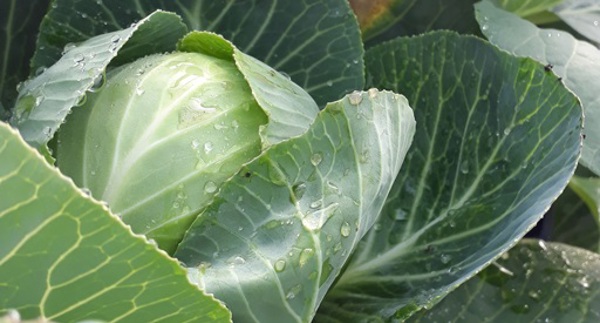
5 Steps to Cabbage Planting Success
- Choose a sunny spot away from strong winds.
- Prepare your soil with organic matter like sheep pellets and compost.
- Add a layer of vegetable mix to plant into. Cabbage is best planted in autumn, early winter and spring in New Zealand.
- Plant cabbage in rows at least 50cm apart.
- Feed your cabbage over the growing season with vegetable food and water regularly.
Follow our full guide below to a bumper crop of homegrown cabbage.
Bursting with goodness, cabbages come in plenty of different shapes and sizes. Over the years bigger, smaller, sweeter and coloured cabbages have been developed. Many are ideal for growing in containers as well as the garden.
Prepare
Although many cabbage varieties do grow in summer, they are generally at their best in spring, autumn and winter.
There are mini varieties available that are perfect for small spots and spaces.
Cabbages don’t like temperatures over 25 degrees, so check you are planting at the correct time.
Refer to our Planting Calendar for when to plant cabbage in your region.
Plant
Like building a house a good foundation is the key to success in your garden. The better the soil, the better your plants will grow. If you are starting with an existing garden bed dig in organic matter like Tui Sheep Pellets and Tui Compost to your soil. Then you can add a layer of Tui Vegetable Mix. If planting in pots and containers, fill with Tui Vegetable Mix.
The best times to plant are early in the morning or late in the day, so the plants aren’t exposed to the hot sun straight away. Always water plants well before and after planting.
Find a full sun, sheltered position to plant and space at least 50cm-70cm apart, to ensure the crops can fully mature and are not fighting for space, fertiliser and water. Cabbages also grow well in large containers.
If you planted cabbage or a certain variety of brassica last year don’t grow them in the same spot as pests and diseases can be lingering in the soil, read our Crop Rotation Guide here.
Seeds can be sown in seed trays or directly in to the garden over spring and autumn - avoid planting when it's too hot as seedlings will bolt.
Planting in garden beds
- Water plants thoroughly before planting and allow to drain.
- Dig a hole, approximately twice the depth and width of the root ball of your plant.
- Partly fill the hole with Tui Vegetable Mix.
- Gently loosen the root ball of your plant and position the plant in the centre of the hole.
- Fill in with Tui Vegetable Mix.
- Press soil gently around the base of the plant.
- Water your plant well.
Planting in pots and containers
- Water plants thoroughly before potting and allow to drain.
- Partly fill your container with Tui Vegetable Mix.
- Gently loosen the root ball of your plant and position the plant in the container.
- Fill your container with Tui Vegetable Mix up to 3cm from the top.
- Tap the container gently on the ground to settle the mix.
- Press soil gently around the base of the plant.
- Water your plant well.
Protect your plants from the elements with layers of Tui Pea Straw Mulch, to help keep their roots moist and keep your garden weed free.
Nourish
Feed your plants and they will feed you. Plants use nutrients from the soil as they grow, so replenishing the nutrients ensures your plants grow to their full potential.
Select a fertiliser specially blended for your crop like Tui Vegetable Food. Feed cabbages planted in pots and containers with Tui NovaTec Premium fertiliser. Well watered, well nourished veges will have a better chance of keeping insect pests and diseases at bay. While your cabbages are growing regularly apply a dose of Tui Organic Seaweed Plant Tonic to give them a welcome boost.
For supercharged feeding with quick visible results try Tui Vege & Herb Liquid Superfood.
Be vigilant and stop unwanted insects and diseases from ruining your plants. Slugs and snails can be an issue - lay Tui Quash slug and snail control around young plants.
HARVEST
Harvest cabbages when the heads look full and firm and eat fresh to enjoy at their best!
Whitefly and caterpillars, particularly the white cabbage butterfly caterpillar enjoy the young leaves too. If infestations are small, try removing caterpillars individually and squashing. Use a layer of fine netting to stop white cabbage butterfly laying their eggs on your plants.